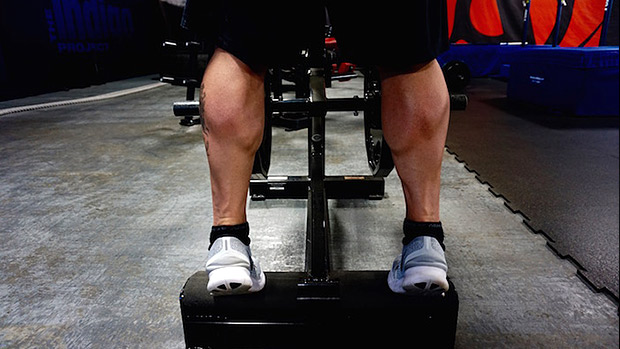If you're disappointed with your calf development, you probably blame genetics. Sure, there are some genetic factors involved: muscle fiber makeup, insertion points, etc.
Some mutants never train their calves and have monster calves anyway. And some folks have to train the hell out of their calves just to make them average.
But most every good coach agrees you don't have to walk around with VERY tiny calves. To paraphrase Dr. Chad Waterbury, calves that look like an apple on a Popsicle stick are better than calves that look like a grape on a Popsicle stick.
So, here's a quick roundup of what we know about effective calf training:
1 – Train them often.
Frequency rules, with most coaches recommending a minimum of 3 days a week of calf training, usually more if they're lagging.
2 – Do a lot of work.
That means volume: lots of sets, lots of reps, and a few different exercises.
One study of runners showed that athletes who ran 59 miles a week had 20 percent larger calves than those athletes running "only" 15 miles a week. No, you don't have to start running 59 miles a week, but this does show that the calves need a lot of volume to grow. Three sets of 10 at the end of leg day just isn't enough for non-genetic mutants.
3 – Hit both major calf muscles.
That would be the gastrocnemius and the soleus. The problem here is that most people just choose one calf exercise, typically the standing or seated calf raise. But you need both.
Your soleus is worked mainly when your knees are bent (seated calf raise) and your gastrocs are worked mostly when your knees are straight (standing calf raise or leg press machine calf raise.)
4 – Go slow and uses pauses.
This is where most people go wrong. Try this:
- Take a few seconds to lift the weight.
- Pause and contract at the top for a few seconds.
- Take a few seconds to lower the weight.
- Pause and hold the stretch at the bottom for a few seconds.
That means every rep would take about 12 seconds, and a set of 10 reps would take about 2 minutes to complete. Now, how many people do you see in your gym doing that?
An Extreme Solution
If you're already doing all of the above, try something crazy. I picked up this superset idea from Charles Poliquin:
- A1. Do the standing or seated calf raise for 8-10 reps using the tempo described above.
- A2. Without rest, hop out of the machine and do 30 reps of continuous bodyweight bounding. Just jump up and down with your knees locked. Your calves should be doing most of the work. Try to jump high and get a rhythm going. Play some House of Pain like it's 1992.
Repeat 2-3 more times and have fun getting out of bed the next morning.





